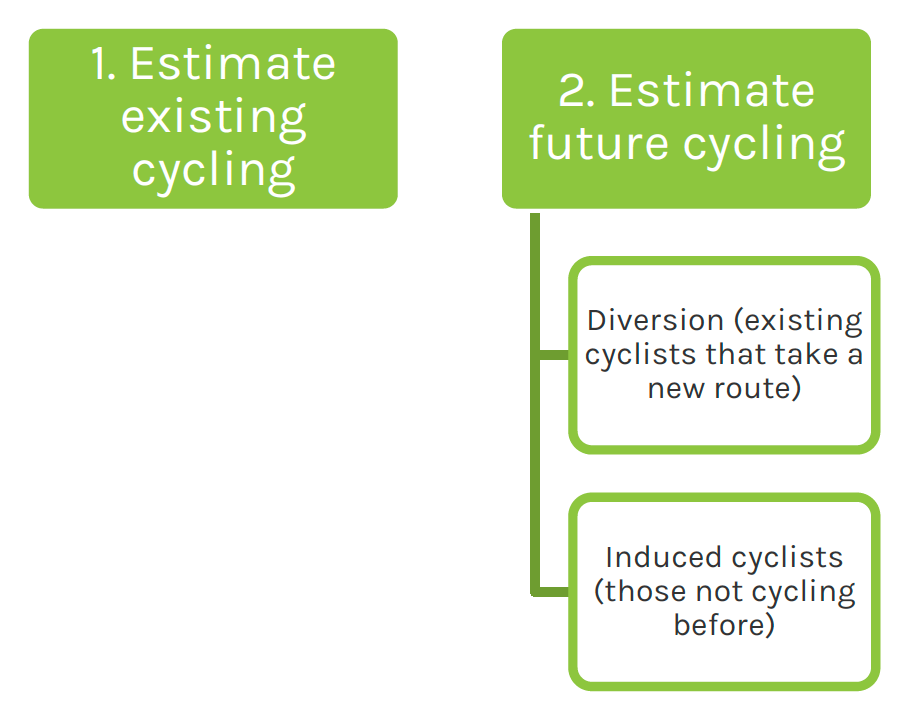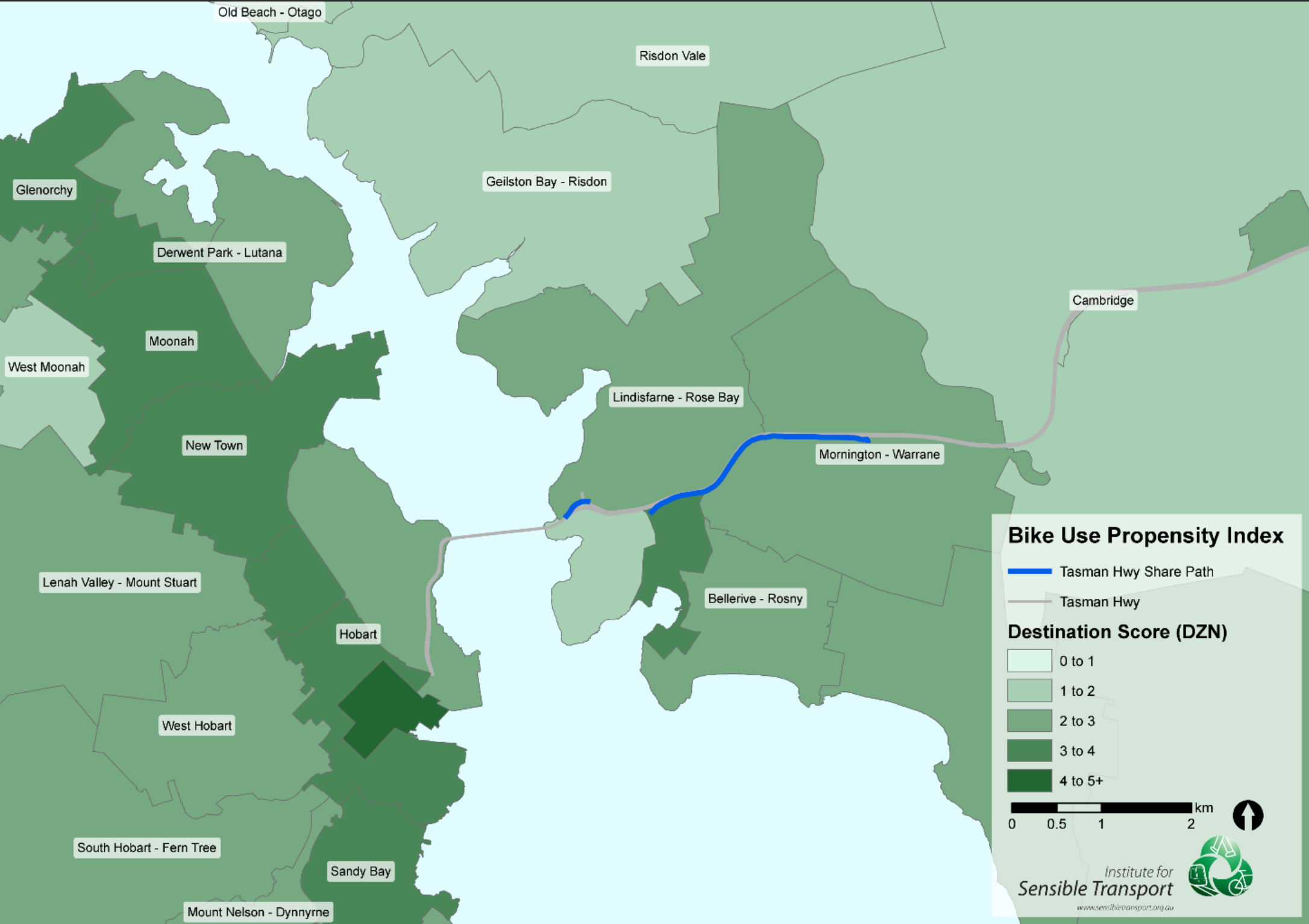Hobart Cycleway Demand Assessment
We assisted the Tasmanian Department of State Growth development a method of estimating cycling demand on a proposed upgrade to a key Tasmanian cycleway.
Location
Hobart
Budget
<$50,000
Commencement
2021
Completion
2021
Overview
The Tasmanian Department of State Growth commissioned us to develop a method for estimating cycling demand changes for a proposed upgrade to a major piece of cycling infrastructure in Hobart.
Our work included the development of a model capable of analysing travel behaviour and estimating the likely shift towards cycling following a future upgrade to a route connecting to central Hobart.
Our approach
Several data have been used to estimate usage of this proposed cycleway. The data sources relied upon in the development of the estimates include:
- Census Journey to Work data from the most recent available Census (2016)
- Household travel survey data, to build an understanding of non-work trips
- Bike Use Propensity Index analysis, developed for this project based on a range of Census collected demographic data that are predictive of latent demand for cycling
- Network analyst tool, used to model route selection between trip origins and destinations.

Understanding the latent demand for cycling
We used our Bike Use Propensity Index to understand latent demand for cycling across the Hobart study area.
The Index was used to moderate estimated levels of cycling that can be expected due to the implementation of the proposed cycleway. Darker areas of the map below indicate higher levels of latent demand for cycling.


Results
This analysis estimates that the development of the off-road cycleway results in:
- Approximately 95 cyclists per day diverting to the new path and another 99 new riders induced due to the new infrastructure.
- 817 additional cycle kilometres travelled across the broader study area and 105 additional trips each day due to the addition of the proposed cycleway into the broader cycling network.
- An additional 4 million cycle kilometres travelled over 10 years.



 More info about this project
More info about this project